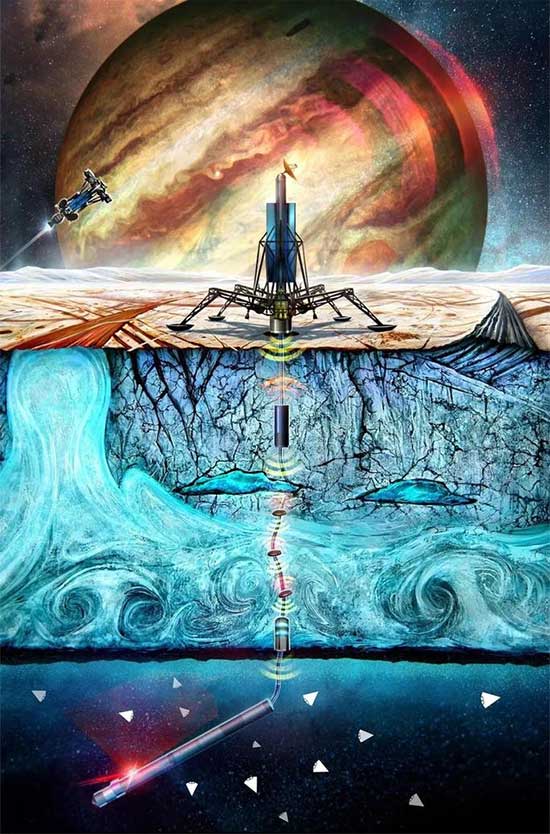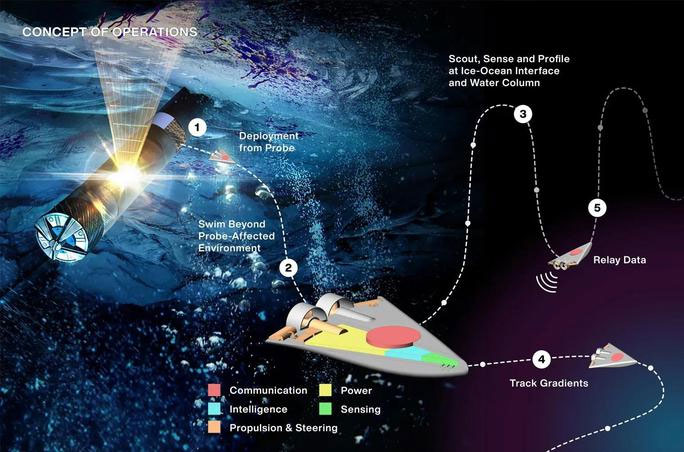This project is led by mechanical engineer Ethan Schaler from NASA’s Jet Propulsion Laboratory (JPL), who first conceived the idea of SWIM – small, swimming robots equipped with ultra-sensitive sensors.

Graphic depicting the cryobot deploying SWIM into an extraterrestrial ocean – (Image: JPL-NASA)
According to SciTech Daily, following Phase I of the project, which received $125,000 in funding from NASA’s Innovative Advanced Concepts (NIAC) program to study feasibility and design options, Schaler’s team has just secured an additional $600,000 for Phase II to create actual prototypes.
The images revealed show Schaler’s fleet of robots resembling ultra-small, yet advanced, paper airplanes that will scatter across the extraterrestrial ocean to explore hypothetical organisms.
These robots are designed to be significantly smaller than similar mission-oriented robots, allowing them to be easily deployed in swarms through the thick ice layers covering the oceans of Saturn’s moon Enceladus or Jupiter’s moon Europa. The more robots there are, the broader the search range.

Tiny SWIM robots – (Image: JPL-NASA)
Approximately 40 SWIM robots, each about 12 cm long, will be packed into a small 25 cm diameter tube of the cryobot, which will function as a submarine to deploy them into the ocean.
Currently, scientists have not determined a specific mission for the SWIM robots, but it is certain that they will follow the Europa Clipper mission (scheduled for launch in 2024), which aims to bring back the first data about Europa’s ocean, thus guiding subsequent missions.
The Europa Clipper primarily operates as an orbiter, collecting remote data while flying around the icy moon. The data it gathers will help landers choose suitable locations and approaches to the extraterrestrial world.


















































